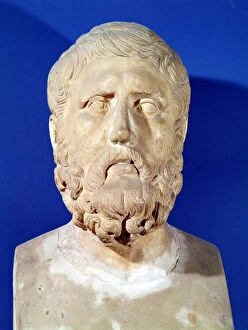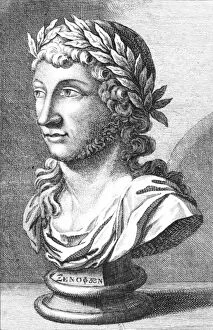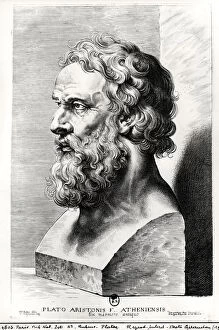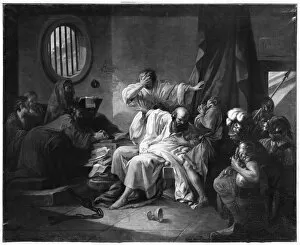Greek Philosopher Collection
Greek philosophers have left an indelible mark on the world of philosophy, shaping our understanding of life and existence
All Professionally Made to Order for Quick Shipping
Greek philosophers have left an indelible mark on the world of philosophy, shaping our understanding of life and existence. From Anaxagoras to Epictetus, their wisdom has been immortalized in various forms of art. In a captivating engraving by S. Beyssent, we see the faces of Anaxagoras and Epictetus etched into history. These great thinkers lived centuries apart but shared a profound curiosity about the universe and human nature. Edgar Degas, known as "the Diogenial Painter, " pays homage to these philosophical giants with his lithograph. The image captures the essence of Diogenes, a controversial figure who challenged societal norms with his unconventional lifestyle. The photograph depicting "The Death of Socrates" transports us back to ancient Athens, where this iconic philosopher faced his demise for challenging conventional beliefs. It serves as a poignant reminder of the sacrifices made by those who dared to question authority. A stunning marble sculpture from 1693 portrays Alexander the Great alongside Diogenes. This juxtaposition symbolizes the clash between power and simplicity, highlighting how even mighty conquerors sought wisdom from humble philosophers. Busts crafted in exquisite marble immortalize renowned thinkers such as Socrates, Aristotle, Zeno of Citium, Plato, and Heraclitus. Each sculpture captures their distinctive features while embodying their intellectual prowess that continues to inspire generations. Edgar Degas once again celebrates Diogenes through a colorful lithograph titled "Le Peintre Diogenial. " This artwork showcases Degas' admiration for both philosophy and artistry as he merges two worlds into one captivating piece. An illustration from Veterum et Recentium Medicorum introduces us to Theophrastus - not only a philosopher but also an influential figure in medicine. His contributions spanned multiple disciplines and further enriched our understanding of human nature. These glimpses into Greek philosophy remind us that knowledge is timeless; it transcends centuries and continues to shape our understanding of the world.













































